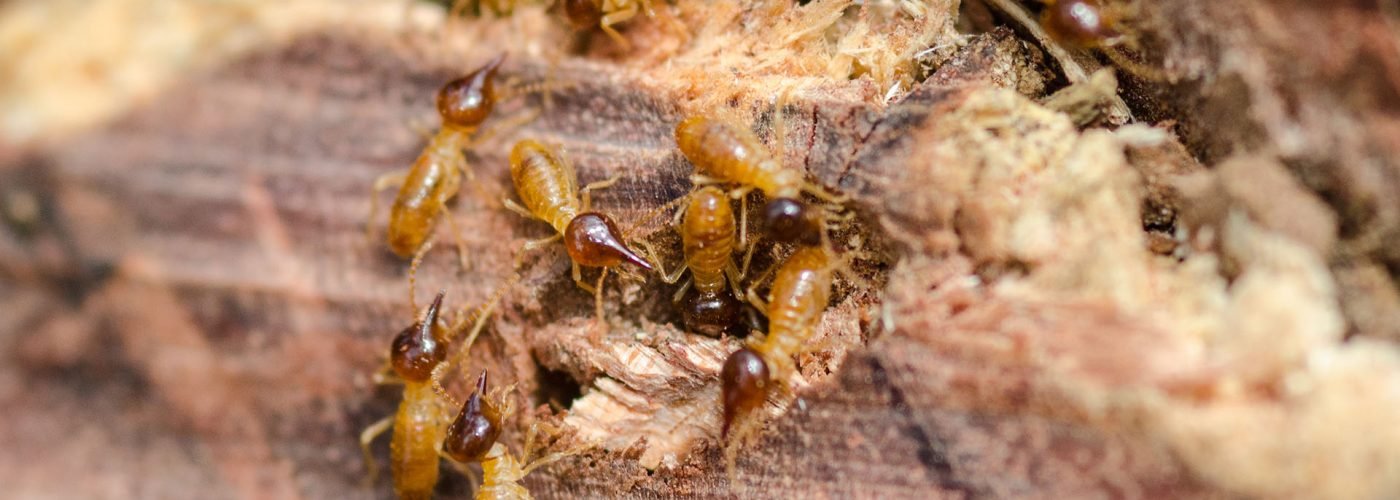What are termites?
Termite insects are referred to as white ants, which devour wood and most materials containing cellulose like cardboard and paper. Termites vary in colours, shapes and sizes depending on the type of species, but are characterised by certain similarities. Termites have great survival instincts and have existed for many millions of years.They are found in regions of mainland Australia both in suburban and country areas.
These critters are closely related to cockroaches on the evolutionary scale. Despite their name ‘white ant’, they have no relation to the ant family and wreak havoc on majority of Australian homes. The key to lowering the cost of termite-related repairs is to conduct frequent termite inspections in order to detect problems early.
Termites work underground and live in tunnels of mud mixed with their excreta and saliva. Their tunnels are built to explore and find food. In most areas of Australia, termites don’t build their tunnels out in the open as they must maintain a high humidity environment to survive.


Hierarchy of termites
Termites live in a hierarchical structure with many different levels:
- King – Together with the queen, the king is responsible for reproduction. The king and queen live together in the very centre of the nest.
- Queen – The queen is much larger when compared to the other termites in the colony. The queen produces thousands of nymphs (also known as baby termites) every day. Queen termites have been known to live for more than 25 years.
- Soldiers – Soldiers are sterile, blind and wingless male and female termites which guard the nest. Soldier termites have prominent jaws and give off a defensive, and sometimes repellent, chemical odour. Their main function in the colony is to protect the termites from natural enemies, such as ants.
- Workers – A typical colony has thousands of workers because, as the name suggests, they do all the work. These termites are also sterile and blind. Workers provide the food for the colony by eating wood or cellulose materials. They will work 24 hours a day and live for several years.
- Reproductives – Also known as alates, they are the caste of termite that form new colonies. Following the nymph stage, reproductives develop wings. At maturity, they are released from the nest in the thousands to establish new colonies. This generally occurs in Spring. Alates are often mistaken for flying black ants.
Termites can damage homes quickly and in most cases their activities are gone unnoticed causing significant problems to home owners damaging up to 34,000 Australian homes every year, with an average repair bill of $10,000 or more which may not be covered by home and contents insurance.

King

Queen

Soldier

Worker

Alate
Tips to prevent termite infestations
It’s always best to call a professional to fix the problem, but there are a few steps you can take to minimise termite infestations in the short term:
- Install a termite monitoring/baiting system which can be checked regularly.
- Have regular termite inspections undertaken by our accredited technicians – these should be annually or more often where termite pressure is high.
- Clear any obstacles or debris from the building perimeter to enable ongoing visual inspection of the home.
- Remove all wood, tiles, bricks etc. stacked up against external walls of the house that may allow concealed entry.
- Fix leaking taps, condensation discharge from air conditioners, hot water system overflow discharge as this helps reduce termite access to free water sources.
- Review lawn and garden reticulation to direct watering away from the house perimeter.
- Where possible, remove any potential termite food sources and manage scrap timber, compost heaps, wooden garden stakes, wooden landscaping features.
Termiticidal Pest Management are here to help. Our Termiticidal technicians are skilled with an advanced knowledge to exterminate and treat termite (white ants) infestations. Our team provides a professional, long-term termite control and treatment, keeping your property termite free! Book your termite pest control service today by contacting our team directly or completing an online booking.
Let us help!
Don’t let these pests get the better of you, we’re here to help. Get in touch today for a fast, friendly and reliable pest management service.
